Facilities and Equipment
The Earth and Climate Sciences Department is housed in a state-of-the-art science building, McCardell Bicentennial Hall.
Earth and Climate Sciences facilities in the building include equipment for high-temperature and low-temperature geochemical studies, for physical property studies of lake and oceanic sediments, and for computer analysis of hydrodynamic and geophysical data.
For outdoor studies, we have geophysical equipment for subsurface studies, and surveying equipment for field studies.
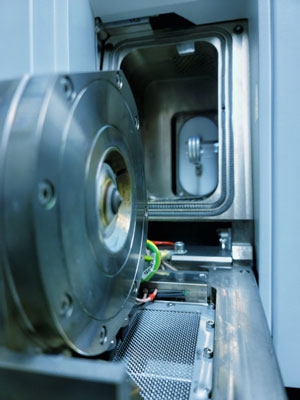
Quadrupole LA-ICPMS
The Thermo iCAP-Q mass spectrometer is used to analyze samples in solution or solid state for trace elements and isotope ratios. Solid state analyses are performed using a coupled NWR-213 laser. Students and faculty in the department use it to analyze rock and water samples, and for U-Pb dating. Users at Middlebury also include the Biology and Chemistry Departments and the Environmental Studies Program. Outside users include students and faculty from UVM, Norwich University, and Dartmouth College. The machine was purchased in 2014 and installed in January 2015. (iCAP-Q from Thermo Fisher).
Electron Microscope
The SEM is used to acquire high-resolution digital images and to analyze mineral compositions. It is equipped with secondary electron, backscatter, and cathodoluminescence. It is also equipped with an energy dispersive X-ray spectroscopy detector and an electron backscatter diffraction detector.
Students and faculty in the department use it to analyze metamorphic, igneous, and sedimentary rocks as well as unconsolidated sediments from Lake Champlain. Students and faculty from the Biology Department and from the University of Vermont also use the facility.
Purchased in 2013 with funds from the George I. Alden Trust (Tescan Vega 3 LMU SEM with Oxford Instruments EDS & EBSD attachments).
Read the College news story.
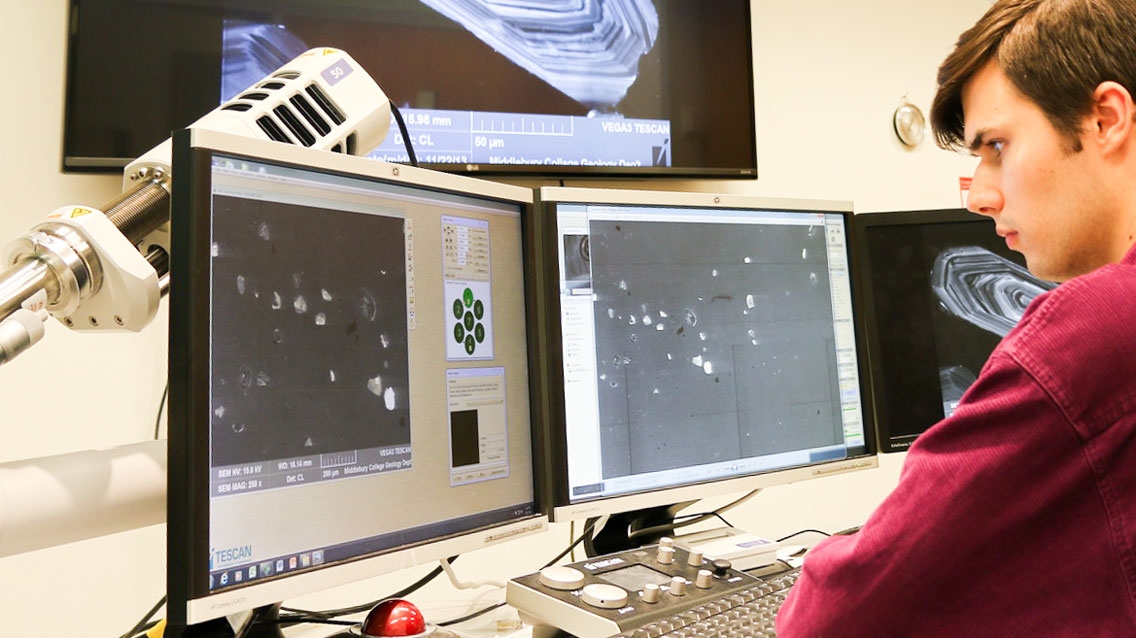
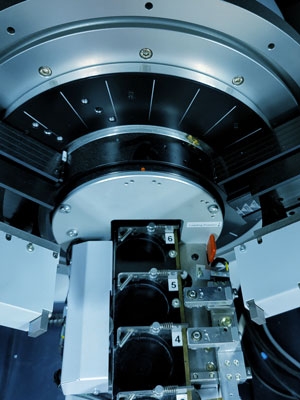
X-Ray Diffractometer
X-ray diffraction is a primary tool to identify and estimate percentages of fine-grained mineral phases. The X-ray diffractometer is used by Middlebury students and Pete Ryan to investigate clay mineralogy in soils and rocks throughout the world.
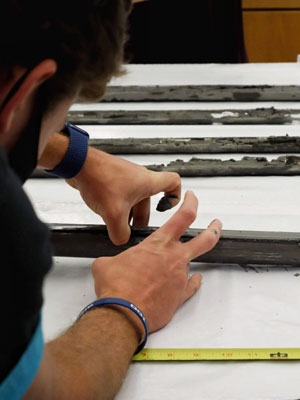
Sediment Analysis
The department is well equipped for the study of lake and oceanic sediments. Allison Jacobel, Jeff Munroe, and Pete Ryan, along with students, manage a wide array of instruments that analyze the physical properties of recovered sediment. This equipment includes two grain-size analyzers, a color spectrophotometer, an LOI analyzer, a pycnometer, a carbon-nitrogen-sulfur analyzer, and a cold-room facility to store cores.
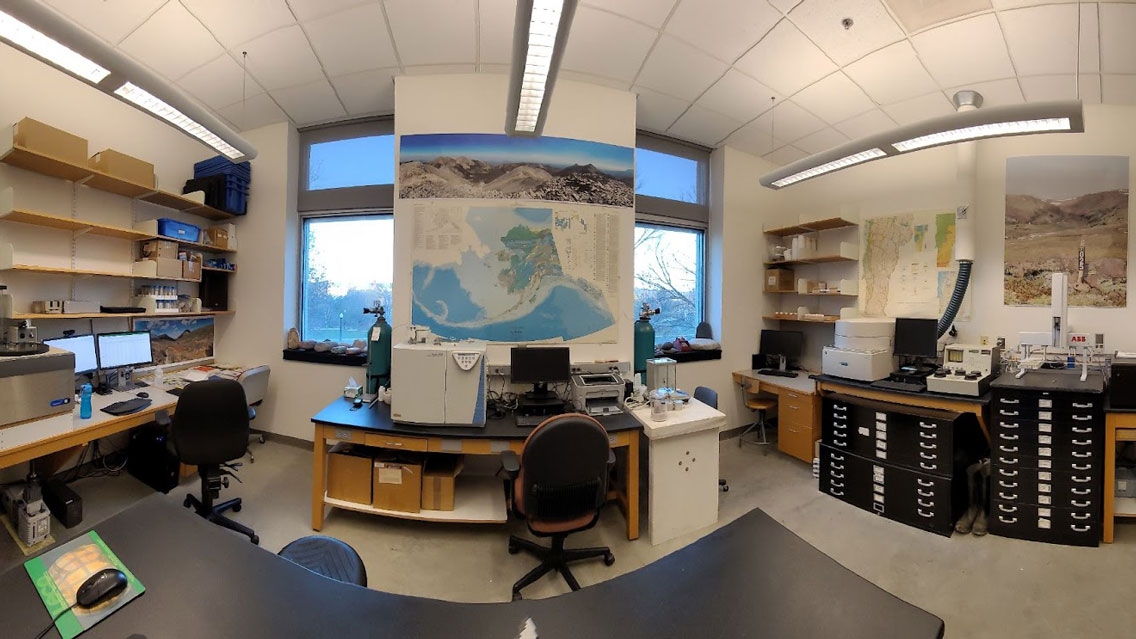
Geophysical Equipment
The department is well equipped with remote sensing equipment for use in courses and for student/faculty research. In the upper level course Geophysics (GEOL 382), students use a gravimeter and ground-penetrating radar to map objects buried in our geophysical study site located just west of Bicentennial Hall.
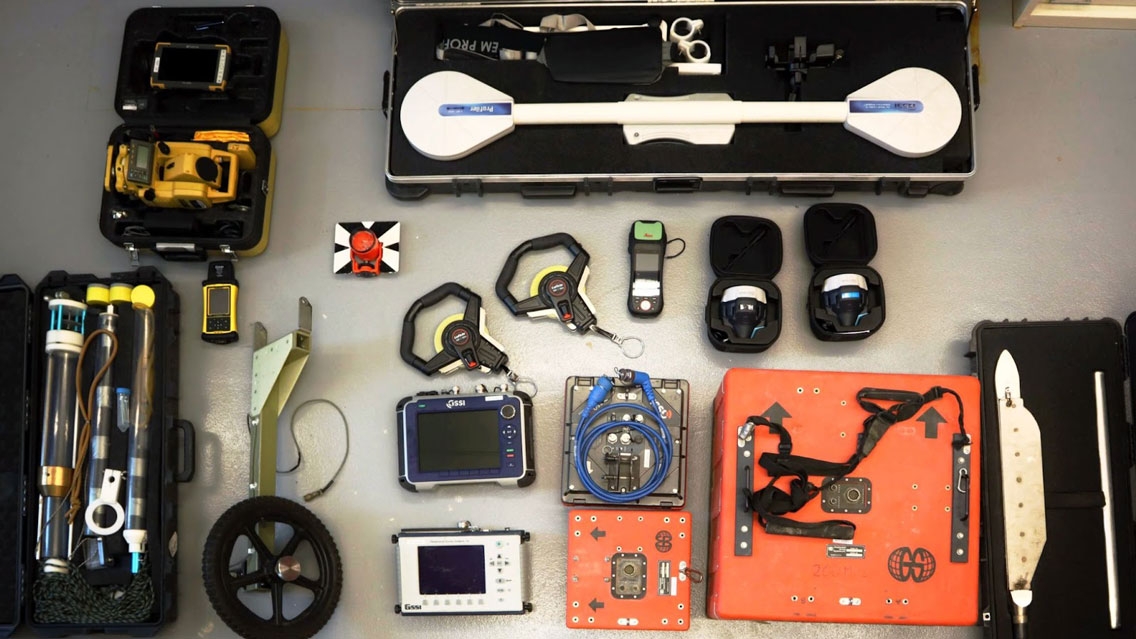
Facility for Oceanographic Research at Middlebury (FOR@M)
The lab is set up to facilitate undergraduate work on research projects focused on reconstructing past ocean/climate system changes. The space includes a sediment prep lab and trace metal clean lab.

The sediment prep lab is for curation, separation, and characterization of marine sediments and their constituents and contains:
- Four Zeiss Stemi 508 stereo microscopes for foram identification and picking
- Two Zeiss Axiocam microscope cameras for teaching foraminifera identification and specimen photography
- Sample refrigerator and freezer
- 6L Freeze dryer
- Oven for drying samples
- Analytical balance
- “MixMaster2020” for sediment disaggregation
- Sieves for separating sediment size fractions
- Sample storage (micropaleo and bulk)
- Computer workstations + printer
The clean lab is for total marine sediment digestion for major element and U-series analysis, and cleaning microfossils for trace metal analysis. The lab has a gowning room, is held at positive pressure relative to the rest of the lab complex, and is designed to function at ISO 6 (Class 1000). The lab contains:
- Vertical laminar flow hood equipped with a HPSS scrubber (ISO 4)
- Horizontal HEPA-filtered flow bench (with boron-free filters)
- Milli-Q IQ 7000 dispenser
- Mettler Ultra Microbalance XPR2U for individual foram mass measurements
- Analytical balance
- Sonicators, centrifuges, hotplates etc.
Cavity Ring-Down Spectrometer

The Los Gatos Triple Liquid Water Isotope Analyzer is used to measure δH, δ17O, and δ18O in water samples. These values are important tracers for use in determining water origin and transport history. The instrument is equipped with an autosampler to maximize sample throughput. Analyses are calibrated against a set of internationally accepted standards, as well as in-house standards developed from water collected in Hawaii, Utah, Vermont, and Alaska. This instrument has been used to study cave dripwater, samples of melted cave ice, precipitation, stream and groundwater, and water discharging from rock glaciers.
Purchased in 2020 with an award from the National Science Foundation “Major Research Instrumentation” program to J. Munroe and P. Ryan.
Thermogravimetric Analyzer

The Leco TGA-701 thermogravimetric analyzer is used to measure loss-on-ignition in soil, sediment, and rock samples. This versatile technique involves heating to progressively higher temperatures while recording cumulative mass lost. Mass loss upon heating to ~100 °C, for example, corresponds to water content. Similarly, heating to 550 °C reveals organic matter content, and 1000 °C is typically considered an indication of carbonate content. Samples can also be heated along a constant temperature ramp and the rate of mass loss tracked. The resulting data can be used to determine which minerals are present. The carousel within the instrument can accommodate 19 samples; a full run from room temperature to 1000 °C takes anywhere from 1 to 10 hours depending on the parameters measured. This instrument has made many thousands of measurements on samples from lake sediment cores, soils, and cave sediments.
Purchased in 2003 with an award from the Vermont EPSCoR program to J. Munroe.
Organic Elemental Analyzer

The Thermo Flash 2000 Organic Elemental Analyzer is used to measure the carbon and nitrogen content of soil and sediment samples. Carbon content is important for calculating carbon inventories, and the ratio C:N in lake sediments is a useful metric for organic matter source, with higher values corresponding to terrestrial organics, and lower values indicating organic matter produced within the lake. The instrument combusts a small amount (~20 mg) of powdered, dry sample and monitors the composition of the exhaust gasses venting from the combustion chamber. An autosampler permits analysis of large numbers of samples, and the instrument is directly connected to a Denver Instruments balance with 5 decimal-place precision. Sample results are calibrated against standard reference materials supplied by Thermo Scientific and an in-house standard prepared from modern sediment retrieved from Nulhegan Pond in northern Vermont. This instrument has made thousands of measurements on samples from lake sediment cores, soils, and cave sediments.
Purchased in 2009 with an award from the National Science Foundation “Major Research Instrumentation” program to J. Munroe and P. Ryan.
Grain Size Analyzer

The Horiba LA-950 v2 determines the particle size distribution of soil and sediment samples by laser diffraction. Samples are suspended in distilled water and continuously pumped through a flow-cell where they interact with lasers of two different wavelengths. The resulting diffraction pattern, recorded by an array of detectors within the instrument, corresponds to the abundance of particles in the sample with different diameters. The instrument is connected to a 30-position autosampler that stirs and automatically injects each sample for analysis. Calibration is accomplished with standard NIST reference materials, as well an in-house standards including an extremely well-sorted sand collected from the beach at Destin, FL. The instrument has determined the particle size distribution of thousands of samples of lake sediment and soils.
Purchased in 2008 with support from Middlebury College.
Ground Penetrating Radar System

The Department has a versatile array of ground penetrating radar equipment for geophysical investigations of the near subsurface. Two control units made by GSSI are available; a SIR-3000, and a newer SIR-4000 which can operate both older antennas and newer digital hyperstacking antennas. A 400 MHz antenna can be used with either controller for shallow (<3 m) investigations, and a 200 MHz antenna is available for deeper studies at lower resolution. In addition, a 350 HS hyperstacking antenna can be used with the SIR-4000 controller for enhanced depth and resolution performance. Both controllers support acquisition of 2D and pseudo-3D datasets; the SIR-4000 controller also interfaces seamlessly with a real-time kinematic GPS system. The GPR equipment has been used for a variety of applications including mapping regolith thickness in a periglacial environment, assessing the presence of internal ice in rock glaciers, and calculating the thickness of perennial cave ice bodies.
Acquired over several years with support from Middlebury College.

Real-Time Kinematic GPS System
The Department has a pair of Emlid Reach RS2 GPS receivers that can be used together as a real-time kinematic GPS system for precise (centimeter) surveying. The receivers connect to the full spectrum of available GPS satellites. One receiver is typically kept stationary as a base station at a known point, while the other is moved between the points to be measured as a rover. The base station constantly broadcasts a real-time correction to the rover GPS over a long-range radio connection. The GPS system has been used to quantify the movement of rock glaciers through repeat annual surveys. It can also be connected to the SIR-4000 ground penetrating radar to embed precise location information directly in the GPR survey data.
Purchased in 2021 with an award from the National Science Foundation to J. Munroe.
Mineral Separation Lab

Middlebury’s mineral separation lab features equipment for rock crushing, sieving, magnetic separation, ultrasonic baths, heavy liquid separation, mineral picking, epoxy mounting, and polishing.

Optically Stimulated Luminescence (OSL) Lab with Lexsyg Smart Reader
Middlebury’s OSL lab is housed in a modest dark room space that includes a sink, fume hood, and drying oven for the preparation of pure quartz and feldspar separates under darkroom lighting. Samples are analyzed on a Lexsyg Smart luminescence reader acquired in 2024.

